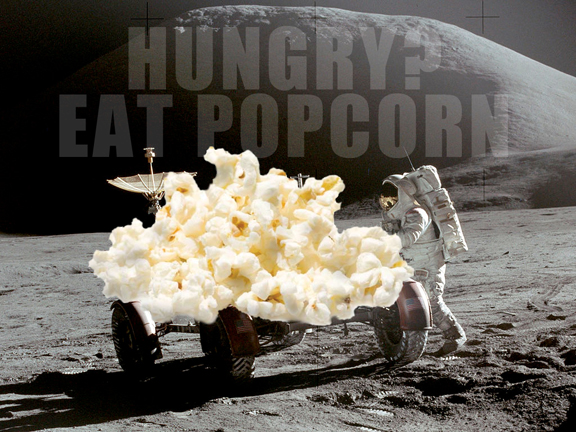
Fifty years ago, January 12, 1969, the crew of Apollo 8 led
the crowds joined together for Super Bowl III in the Pledge of Allegiance. Frank Borman, Jim Lovell and William Anders, the three man crew of the spaceflight, had just splashed
down 16 days earlier from the first ever orbit of the moon in preparation for
the lunar landing later that summer. Of course, you can still find people today
who think the whole flight to the moon was a gigantic hoax. They theorize that
the manned space flight program was dreamt up by the government to dupe the
Soviets into thinking we had the ability to attack them from outer space. The
whole thing was being filmed on a studio set in Hollywood and those astronauts
who reportedly traveled to the moon were actually part of the CIA.
There are many other conspiracy theories that seem to
recirculate every few years. Several years ago, Time Magazine published the 10 Most Enduring Conspiracy Theories –
urban legends that simply would not go away. Among them were the stash of UFO
aircraft at Area 51 in New Mexico, the death of Paul McCartney in 1966 and his
look-alike replacement (Billy Sheers) secretly revealed in Beatles songs, the
presence of Annunaki –
extra-terrestrial reptiles disguised as world leaders, major heads of business,
pop culture icons and the Free Masons – who are behind most wars, disease and
catastrophic events.
Although
this did not make the Time Magazine list, marketing has its own conspiracy
theories. Have you heard that you can make someone buy your brand if you
mention it seven times in 30 seconds? How about you can sear your marketing
message on someone’s brain if you flash it in front of them in a fraction of a
second (you might have heard of the "Hungry? Eat Popcorn” message that was
added to a single frame of a movie at a cinema in the 1950s. Take a look at my
previous article, Your unconscious
marketing thoughts.) All of this seems very suspicious when you suddenly get the
urge to eat popcorn in the middle of a movie. Let me explain that there is
plenty of suggestion in marketing that would cause you to suddenly crave
something you had seen in an ad. But most of the time we have a craving because
we have had a positive experience with the product prior to the current occurrence.
For instance, I happen to like popcorn. If I were watching a movie and I knew
there was a vendor selling popcorn, I would be inclined to buy a container of
it. However, I would be more inclined if I caught a whiff of freshly popped
kernels than if it were just bagged and sitting on a shelf. Why? Because I have
experience eating freshly popped corn (which I really like) and bagged popcorn
which is days old (which I do not like).
Here is where marketing really does its work. First, getting
someone to try your brand for the very first time is critical to your ongoing
success. That first experience has to be great or you will probably never sell
the person again. In the mind of your customer, you want them to subconsciously
fall in love with your product or service so that every time they encounter
your brand, they want more. It is the job of marketing to make sure that first
exposure is golden. Second, it is very important to listen to your customers.
What is it they really want from you? After you understand what they need, how
can you exceed that expectation? That extra effort does not necessarily mean
you have to do anything that costs you any more to produce. It has more to do
with how your customer feels about you and your brand. Don’t discount human
feelings in this equation. Many of the subconscious thoughts we have about
brands are nothing more than the effect of having our feelings stroked. Have
you ever heard of serotonin? Serotonin
is a chemical that is produced by nerve cells in your body. When serotonin
levels are low, you will face depression. When they are elevated, you will be
happy. Do you know what impacts serotonin levels in your body? Sunlight,
remembering happy events, human touch, and food! (The amino acid tryptophan,
which is found in many of the foods we eat, stimulates serotonin production in
your body.) So there is something to be said of a marketing plan that follows
up a sale with a customer experience that includes something to eat, affirming
conversation, something to bring about laughter, a handshake and a little
sunshine.
I have an old friend who taught me something about dealing
with people. He said he never left a conversation that he did not conclude by
saying something affirming to the other person, shaking hands and ending the
meeting with a smile. People are drawn to him, even now when he is 20 years
removed from his retirement. Here is the conspiracy behind good marketing: if
you make people feel good they will buy from you. Raise the serotonin in your customer and they will remember
good things about your brand.
__________
Photo of Lunar Rover taken by Commander David Scott/NASA